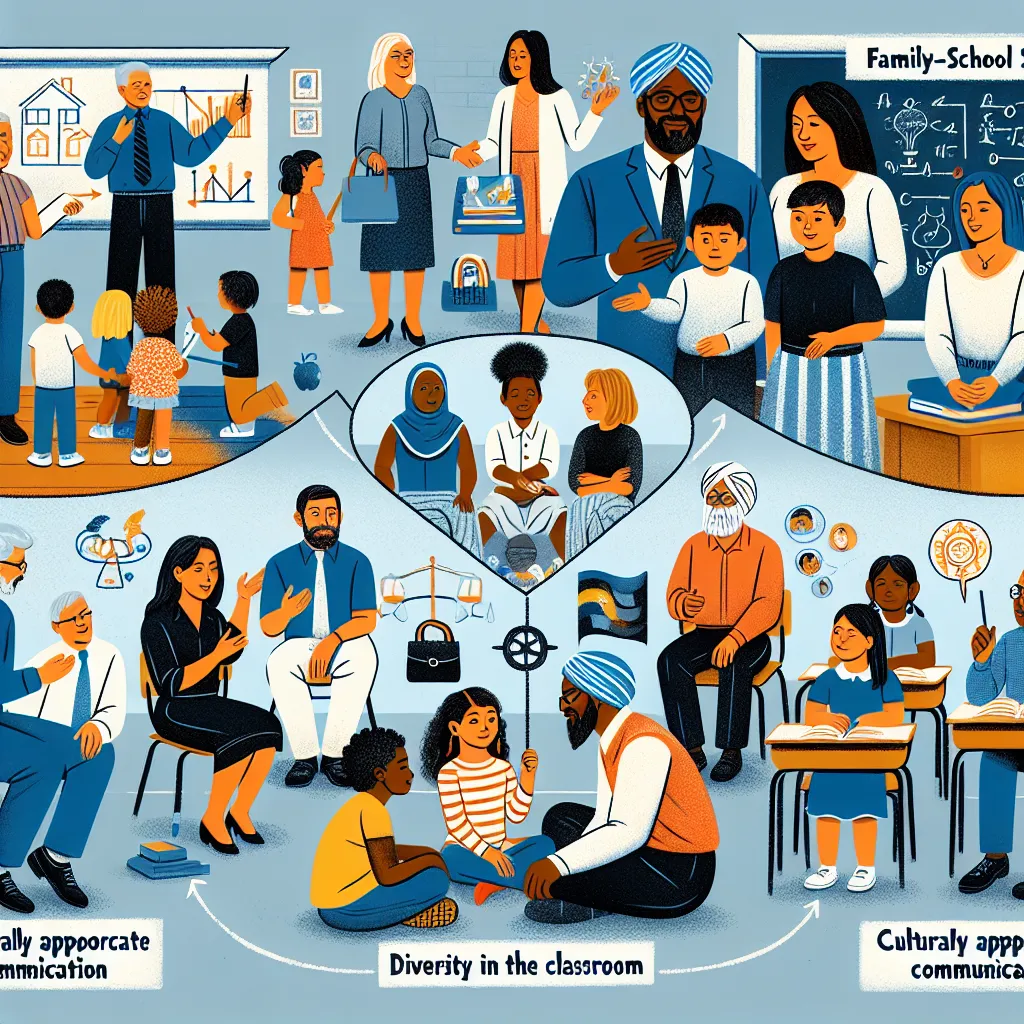Ask AI on The Internet
Question: QUESTION 3 [24] 3.1 Explain the difference between parental involvement and parental engagement. (4) 3.2 Below are the seven key dimensions of family-school partnerships (Gestwicki, 2016; Family-School Partnerships Framework, 2018). • Communicating • Connecting learning at home and school • Building community and identity • Recognising the role of the family • Consultative decision making • Collaborating beyond the school • Participating 3.2.1 Which of the above dimensions do you consider the most important and why? (4) 3.2.2 Which dimension do you consider the least important and why? (4) 3.3 Provide two examples of classroom-based activities to make learners aware and respectful of diversity. (8) 3.4 Define the meaning of culturally appropriate communication and provide an example to support your answer. (4) QUESTION 4 [20] 4.1 Sometimes parents want to support their children’s learning at home but do not know where to start. Write down five tips to help parents support their children’s learning at home. (10) 4.2 Design a rubric to evaluate the availability of support structures for effective partnerships at school. In other words, you are asked to design criteria that you can use to assess whether a school has support structures. (10)
Sure, I can help you with that. Below are the answers to your questions: **QUESTION 3 [24]** **3.1 Explain the difference between parental involvement and parental engagement. (4)** Parental Involvement refers to parents participating in school-based activities, such as attending PTA meetings, volunteering at school events, or assisting with classroom activities. It implies a more passive role where parents support the structures and programs set by the school. Parental Engagement, on the other hand, is a more active and collaborative role where parents and educators work together to support and improve the learning, development, and health of children. It involves consistent, two-way communication and partnerships, where parents are not just supporting but also contributing to and influencing the educational environment and curriculum. **3.2.1 Which of the above dimensions do you consider the most important and why? (4)** I consider "Communicating" as the most important dimension because effective communication is the foundation of all other areas of successful family-school partnerships. Clear, consistent, and open communication ensures that parents are fully informed and can participate meaningfully in their child's education. It helps in building trust and provides a way for educators and parents to share expectations, provide feedback, and address any concerns promptly and effectively. **3.2.2 Which dimension do you consider the least important and why? (4)** It’s challenging to deem any of the dimensions as least important as they all contribute to a holistic approach to family-school partnerships. However, if I have to choose, I might consider "Consultative decision making" as the least critical initially. This is not to diminish its importance, but compared to others like communication and connecting learning at home and school, consultative decision making can be minimized initially. Creating a solid base of communication and trust might be the more immediate priorities for building a strong partnership. **3.3 Provide two examples of classroom-based activities to make learners aware and respectful of diversity. (8)** Example 1: Multicultural Day Students can participate in a Multicultural Day where they research and present about a culture different from their own. They can bring traditional foods, wear traditional clothes, and share interesting facts or stories about the culture they have studied. Example 2: Literature Circles Implement literature circles that read and discuss books from diverse authors and cultures. This activity encourages students to understand and appreciate different perspectives and experiences through storytelling and group discussions which emphasize empathy and respect for diversity. **3.4 Define the meaning of culturally appropriate communication and provide an example to support your answer. (4)** Culturally appropriate communication means understanding and respecting cultural differences in communication styles and preferences and adjusting how you convey and interpret messages accordingly. Example: When communicating with parents from different cultural backgrounds, a teacher might provide information in various languages, ensure that communication styles are respectful of cultural norms (like using formal titles), and offer multiple communication channels (such as in-person meetings, written notes, and digital platforms) to accommodate different preferences and accessibilities. --- **QUESTION 4 [20]** **4.1 Sometimes parents want to support their children’s learning at home but do not know where to start. Write down five tips to help parents support their children’s learning at home. (10)** 1. **Create a Learning Space:** Designate a quiet, well-lit area in your home where your child can focus on schoolwork without distractions. 2. **Establish a Routine:** Set a consistent homework and study schedule that fits well with your family’s daily routine, ensuring that your child has enough time for rest and extracurricular activities. 3. **Stay Organized:** Help your child organize their school materials. Maintain a calendar with important deadlines, test dates, and school events. 4. **Encourage Reading:** Develop a daily reading habit by reading together or discussing books and articles. This will enhance comprehension and foster a love of learning. 5. **Communicate with Teachers:** Regularly communicate with your child’s teachers to stay updated on their progress and understand areas where they might need additional support or resources. **4.2 Design a rubric to evaluate the availability of support structures for effective partnerships at school. (10)** Here is a simplified rubric you can use: | Criteria | Excellent (4) | Good (3) | Fair (2) | Poor (1) | |---------------------------------|--------------------------------|----------------------------------|----------------------------------|------------------------------------| | **Communication Channels** | Multiple, effective channels, including newsletters, emails, and meetings. | Adequate channels, some consistent communication. | Few channels, inconsistent communication. | Limited to no channels, poor communication. | | **Parent Involvement** | High level of parent participation in a range of activities. | Moderate level of participation in some activities. | Low level of participation, limited activities. | Very low or no parent participation activities. | | **Educational Resources** | Abundant resources available for parents (workshops, guides, etc.). | Some resources available but not exhaustive. | Limited resources, infrequent updates. | No or minimal resources available for parents. | | **Collaborative Decision-Making**| Parents regularly involved in decision-making processes. | Occasional involvement in decision-making. | Rarely involved, mostly school-decided. | No involvement in decision-making processes. | | **Cultural Sensitivity** | Highly effective in addressing diverse cultural needs of the school community. | Generally good at addressing cultural needs. | Some attempt to address cultural diversity. | No effort made to address cultural diversity. | | **Support for Student Learning**| Strong, consistent support structures like tutoring and mentoring. | Moderate support structures, accessible to many. | Basic support structures, limited access. | No significant support structures in place. | | **Facilities and Infrastructure**| Excellent facilities and infrastructure supporting partnerships. | Good facilities, some improvements needed. | Adequate facilities, significant improvements needed. | Poor facilities and inadequate infrastructure. | | **Feedback Mechanisms** | Regular, structured feedback from parents and students is sought and actioned. | Feedback is occasionally sought and sometimes actioned. | Feedback rarely sought, action is infrequent. | No formal feedback mechanisms in place. | | **Professional Development** | Continuous training programs for staff on family engagement. | Occasional training programs on family engagement. | Limited training programs on family engagement. | No training programs on family engagement. | | **Community Involvement** | Strong partnerships with external organizations and community groups. | Moderate partnerships, occasional collaborations. | Limited partnerships, minimal community involvement. | No external partnerships or community involvement. | --- Feel free to use, modify, or expand these suggestions based on your specific requirements or what you judge to fit best.
Think your answer is better than the AI's? Post it below.
Other Most Relevant Posts:
 **Education Assessment Guide**
- **Overlap Between Home and School**
- **School Governing Body**
- **Parent Involvement**
- **D6 Communicator App**
- **Case Study Analysis**
- **Mind Map/Word Clo
**Education Assessment Guide**
- **Overlap Between Home and School**
- **School Governing Body**
- **Parent Involvement**
- **D6 Communicator App**
- **Case Study Analysis**
- **Mind Map/Word Clo
 Title: Exploring Educational Collaboration: A Deep Dive into Ubuntu, Family Structures, and School-Parent Partnerships
Title: Exploring Educational Collaboration: A Deep Dive into Ubuntu, Family Structures, and School-Parent Partnerships
 **Encouraging Academic Growth: Parental Tips for Home Learning Support**
**Evaluating School Support Systems for Better Partnerships**
**Encouraging Academic Growth: Parental Tips for Home Learning Support**
**Evaluating School Support Systems for Better Partnerships**
Question Tags
If you want your question answered by an AI, click here.




Post your own comment: